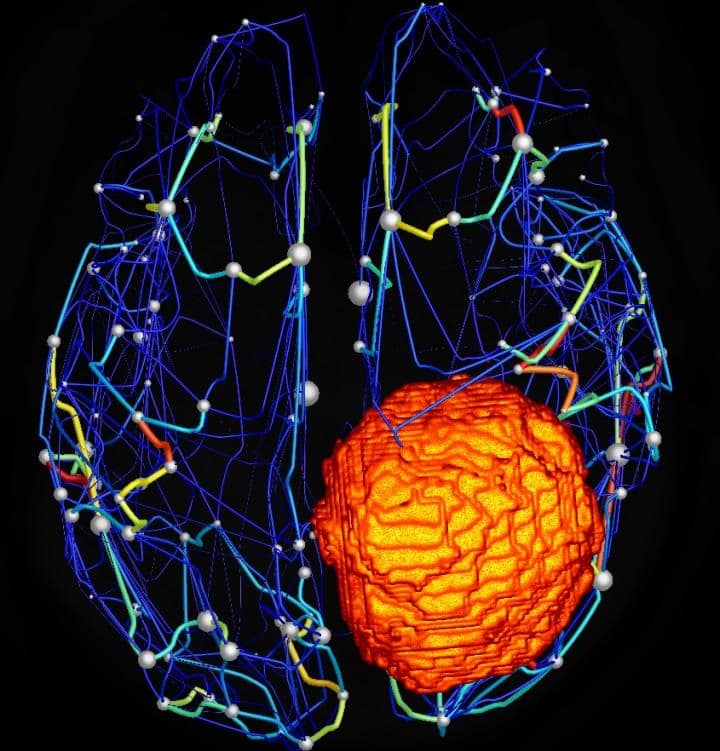
Researchers from Belgium have created virtual models of the brain individually tailored to patients’ functional MR images (fMRI), according to an article published online in eNeuro. These models can predict the effects of brain tumours and may help improve surgical planning for their removal (eNeuro 10.1523/ENEURO.0083-18.2018).
When planning for brain tumour resection, clinicians typically examine functional MR images to identify key areas around the tumour as they develop a surgical strategy. But the complex dynamics of the brain make it difficult to predict postsurgical outcome based on the limited information these images provide.
One recent measure to improve the visualization of the brain has been to create more comprehensive brain models that simulate neural activity. These models can integrate fMRI data with the biophysics of the brain to predict brain function and help determine the optimal surgical approach, wrote senior author Daniele Marinazzo and colleagues from Ghent University.

To test the viability of this technique, Marinazzo and colleagues used open-source software called the Virtual Brain to construct personalized brain models. They used neuroimaging data from 25 patients who had brain tumours and who underwent an MRI exam at Ghent University Hospital between May 2015 and October 2017. They also made similar brain models of 11 patients without brain tumours.
The investigators found that studying these models allowed the surgical team to assess brain function in all of the patients, as well as accurately predict the effect of tumours on brain function. Specifically, the models revealed that the number of connections in the tumour regions of the brain was much lower (p = 0.0007) and more variable (p = 0.01) than in non-tumour areas.
“Reliable prediction of patient-specific large-scale brain dynamics would open up the possibility … to investigate what types or extent of damage the brain can withstand, and conversely, which kind of distortions can be expected after brain lesions, including those purposively induced by surgery,” the authors wrote.
One of the main limitations of the study was its small sample size, but the authors plan to expand their research in the future and look into whether the virtual brain model can reliably predict postsurgical brain function.
“This [future research] would be a major step toward presurgical virtual exploration of different neurosurgical approaches and to identify an optimal surgical strategy,” they wrote.
- This article was originally published on AuntMinnieEurope.com © 2018 by AuntMinnieEurope.com. Any copying, republication or redistribution of AuntMinnieEurope.com content is expressly prohibited without the prior written consent of AuntMinnieEurope.com.



